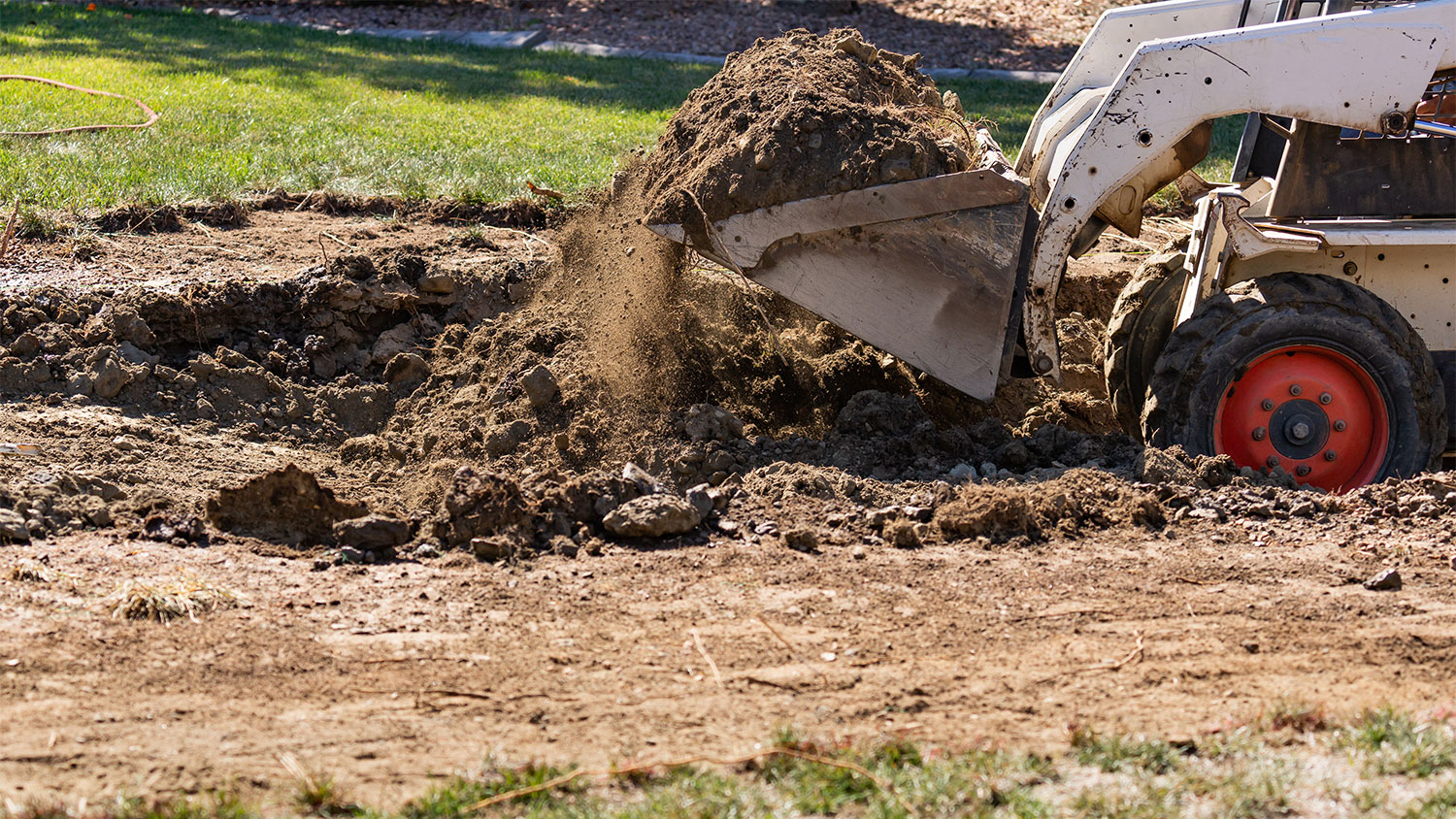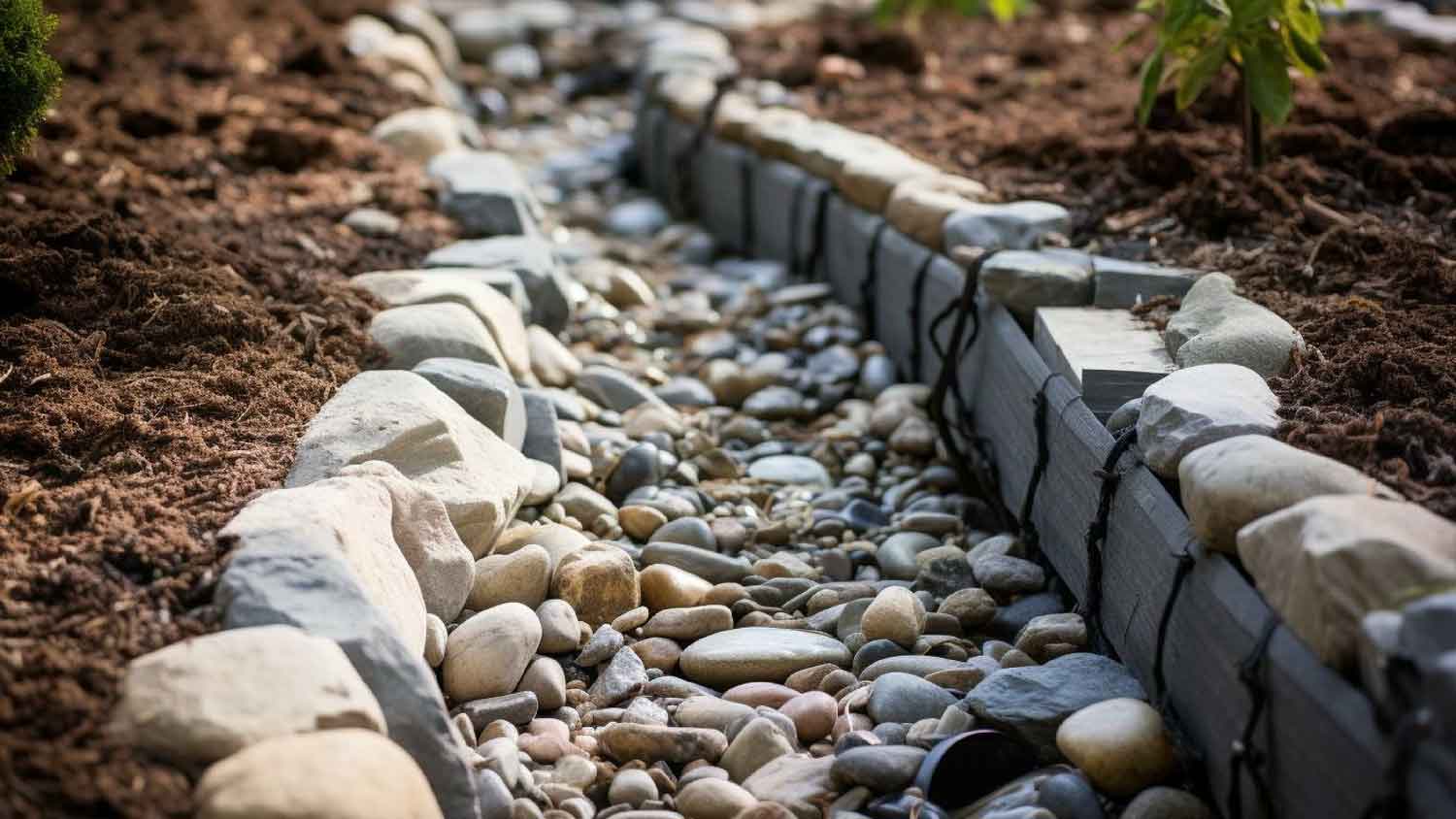
Discover how much trees cost to plant, exploring how factors like size, quantity, materials, and labor affect the total cost.
The average cost for forestry mulching in the U.S. is $500 per acre. Depending on your specific project requirements, most homeowners can expect to pay between $400 and $1,500 per acre.
Forestry mulching uses specialized machinery to cut, grind, and clear vegetation, leaving shredded organic material on the ground to enrich the soil.
Common materials for forestry mulching include underbrush, small trees, or dense brush, and projects may or may not include land grading.
This project requires plenty of specialized equipment and expertise, so we don’t recommend DIYing.
To save money, consider hiring a pro in the off-season and leaving large trees standing.
This article was created using automation technology and thoroughly fact-checked and edited by HomeAdvisor Editor Ryan Noonan.
Forestry mulching converts unwanted vegetation into ground cover by using specialized machinery to process trees, brush, and undergrowth. This land clearing method typically costs between $400 and $1,500 per acre, with a national average of $500 per acre. Project pricing varies based on factors like terrain challenges, vegetation thickness, and total acreage. Pros might charge hourly rates of $125 to $400 for small, compact areas, while larger properties may qualify for volume-based pricing structures.
Understanding the factors that influence mulching helps you create a more accurate budget for your needs.
The type of forestry being mulched plays a role in the total cost, with denser materials costing more than small or lightly forested areas.
| Material Type | Average Cost Per Hour |
|---|---|
| Underbrush and Small Trees | $125–$200 |
| Underbrush With Grading | $150–$300 |
| Heavy Dense Brush | $200–$400 |
The total area requiring mulching directly influences your overall investment. Contractors frequently offer reduced rates for larger properties since mobilization costs are spread across more acreage.
| Number of Acres | Average Cost |
|---|---|
| 0.5 | $200–$750 |
| 1 | $400–$1,500 |
| 2 | $800–$3,000 |
| 5 | $2,000–$7,500 |
| 10 | $4,000–$15,000 |
When contractors charge by the hour, project duration becomes a critical cost factor. Denser vegetation, difficult terrain, and unexpected obstacles all extend working hours.
| Job Length (Hours) | Average Cost |
|---|---|
| 2 | $250–$800 |
| 4 | $500–$1,600 |
| 8 | $1,000–$3,200 |
| 16 | $2,000–$6,400 |
Different forestry mulching projects require various equipment types. Smaller jobs might only need a skid steer with a mulching attachment, while larger or more challenging sites could require specialized forestry equipment. Rental costs for a skid steer with mulching attachments typically run $1,200 to $3,000 per day if you're considering the DIY route.
Properties with steep inclines, rocky surfaces, or limited access points cost more for forestry mulching because they require specialized equipment or additional labor time.
The thickness and type of vegetation significantly impact pricing. Sparse undergrowth costs substantially less to clear than dense brush or mature saplings. Areas with invasive species or particularly thick vegetation will generally command premium rates.
Before beginning any forestry mulching project, check local regulations regarding land clearing. Permit costs typically range from $100 to $500 depending on your location. Some environmentally sensitive areas may have additional requirements or restrictions that could affect your project timeline and budget.
While renting equipment for DIY forestry mulching is possible, it comes with significant considerations. Equipment rental costs range from $1,200 to $3,000 per day for a skid steer with mulching attachment. Purchasing your own mulching attachment for existing equipment typically costs between $1,700 and $5,200.
Safety considerations: Operating heavy machinery without proper training presents substantial injury risks.
Equipment knowledge: Learning to use specialized forestry equipment effectively requires experience that most homeowners lack.
Time investment: Professional land clearing crews complete projects more efficiently than DIY attempts.
Quality results: Professionals deliver consistent, well-processed mulch that benefits soil health.
Many forestry mulching projects require additional services beyond basic vegetation processing. These supplementary services affect your total project cost:
Stump grinding: $150–$500 per stump
Boulder removal: $650–$1,200 per boulder
Tree removal: $200–$2,000 per tree
Land surveys: $400–$1,200
Yard waste removal: $190–$600
Consider these practical approaches to reduce your forestry mulching expenses:
Be flexible with your timeline to potentially secure off-season rates.
Handle minor debris removal yourself before professionals arrive.
Coordinate with neighbors to share mobilization costs for multiple properties.
Obtain multiple quotes from different service providers.
Focus on clearing only essential areas rather than the entire property.
Leave large trees standing to reduce costs and maintain shade.
Create clear access paths to minimize equipment navigation time.
After initial clearing, some properties may require periodic maintenance. If you're not repurposing the cleared land in a way that prevents regrowth, you might need additional mulching services in the future. These maintenance sessions typically cost less than the initial clearing since they address smaller amounts of new growth.
Depending on your climate and vegetation types, periodic follow-up mulching may be necessary to manage regrowth. The frequency and cost of maintenance varies based on your specific property conditions and growth rates.
Following forestry mulching, some properties may require additional work to repair soil erosion or plant new trees and flowers. Landscaping costs depend on your property needs but expect to pay up to $3,000 for planting projects or lawn seeding.
While forestry mulching can create defensible space in fire-prone areas, consult with your insurance provider about any potential policy implications. Coverage requirements and potential benefits vary by insurer and location.
No place is more important than your home, which is why HomeAdvisor connects homeowners with local pros to transform their houses into homes they love. To help homeowners prepare for their next project, HomeAdvisor provides readers with accurate cost data and follows strict editorial guidelines. After a project is complete, we survey real customers about the costs to develop the pricing data you see, so you can make the best decisions for you and your home. We pair this data with research from reputable sources, including the U.S. Bureau of Labor Statistics, academic journals, market studies, and interviews with industry experts—all to ensure our prices reflect real-world projects.
From average costs to expert advice, get all the answers you need to get your job done.

Discover how much trees cost to plant, exploring how factors like size, quantity, materials, and labor affect the total cost.

Learn who to hire to regrade your yard. Compare grading contractors vs landscapers, see the process, timelines, and average costs to plan confidently.

Wondering who to hire to fill in an uneven lawn? See if a landscaper or general contractor fits your project and learn what to expect before you book.

Curious who to hire for mulching? Compare mulching companies, landscapers, and tree services, plus DIY vs. pro costs, to choose the right help today.

How much river rock will your next landscaping project need? Find out with our river rock calculator.

How much topsoil do you really need for your project? Dig into this topsoil calculator to find out.